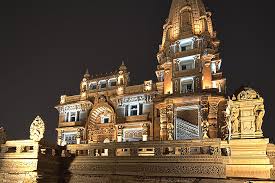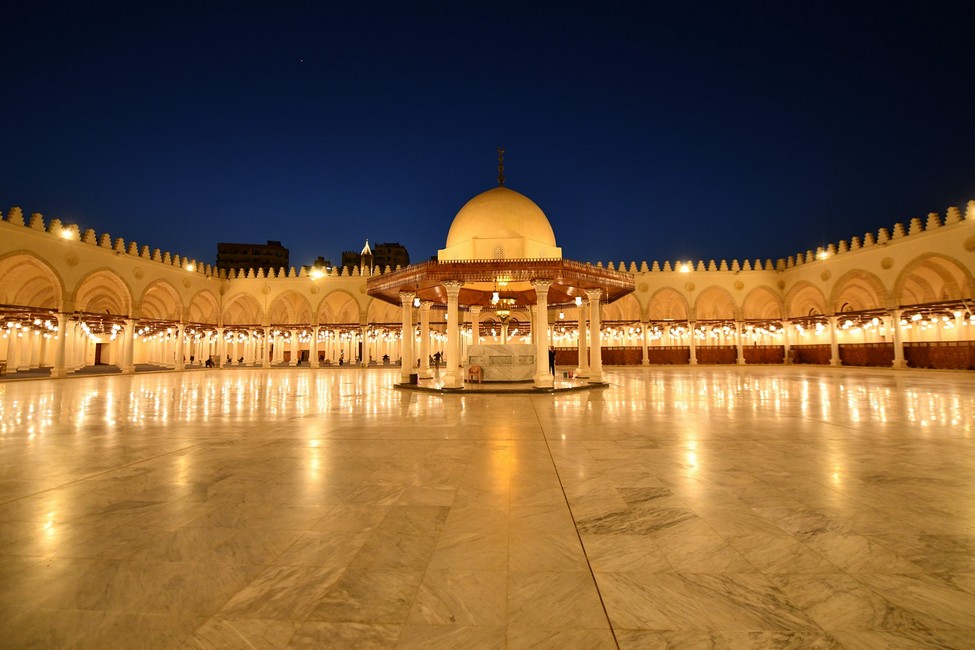Baron Empain Palace is one of Cairo’s most iconic and unique architectural landmarks, reflecting a fascinating blend of Indian, European, and medieval styles. Located in Heliopolis, Baron Empain Palace was envisioned and built by Belgian industrialist Edouard Empain between 1907 and 1911, designed by French architect Alexandre Marcel. Today, Baron Empain Palace stands as an extraordinary testament to Egypt’s modern heritage and innovation, making it a compelling destination for history enthusiasts and tourists alike.
History of Baron Empain Palace
Baron Empain Palace was constructed from 1907 to 1911 to serve as the residence of Baron Édouard Empain, who came to Egypt to develop transportation networks and founded the Heliopolis district. Baron Empain acquired desert land northeast of Cairo and collaborated with Alexandre Marcel, who drew inspiration from the Hindu temples of South India and Cambodian temple architecture, notably Angkor Wat. The palace’s exterior features statues of Indian dancers, elephants, Buddhas, and Hindu deities, while the interior was designed by Georges-Louis Claude and included lavish rooms, Belgian glass windows, spiral staircases, and exotic marble details.
Baron Empain Palace rapidly became a symbol of luxury and innovation, surrounded by gardens, green terraces, and marble statues. Its history is intertwined with the foundation of Heliopolis and Egypt’s transition into the twentieth century, reflecting European influence and international vision.
Activities You Can Do at Baron Empain Palace
- Tour the palace’s ornate rooms, spiral staircases, and rooftop tower, admiring the intricate architectural details.
- Walk through the landscaped gardens and green terraces, ideal for photography and relaxation.
- Attend cultural events, art exhibitions, or special festivals often held in the palace or gardens.
- Learn about Egypt’s modernization and the fascinating stories associated with Baron Empain and his residence.
- Explore nearby cafes and restaurants in Heliopolis for a complete day of discovery.
Nearby Places to Learn More About Baron Empain Palace’s History
- Basilica Church: A landmark of Baron Empain’s urban vision and European-inspired architecture in Heliopolis.
- Heliopolis Palace Hotel: Another monument built during the district’s development.
- Child Museum and Royal Carriage Museum: Reflect daily life and transportation history in Egypt.
- Bayt al-Suhaymi: In central Cairo, a restored historic house that complements Baron Empain Palace’s narrative of architectural evolution.
- Khan El Khalili and Tahrir Square: Short drives away, these vibrant areas deepen your understanding of Cairo’s history and transformation.
What Makes Baron Empain Palace Unique?
Baron Empain Palace is distinguished by its Hindu-Khmer architectural style, spiral tower, and blend of global influences rarely found elsewhere. The palace stands as the centerpiece of Heliopolis, symbolizing Egypt’s embrace of modernity and multicultural design. Its remarkable combination of Indian-inspired carved facades, lavish interiors, panoramic rooftop tower, and historic gardens set it apart from other Egyptian palaces. Recent restorations have restored its original splendor, and intriguing legends about secret tunnels and mysterious events add to its allure.
Conclusion
Baron Empain Palace represents an outstanding example of Egypt’s early twentieth-century innovation, architectural creativity, and cultural fusion. With its exotic design, pioneering concrete technology, and foundational role in developing Heliopolis, Baron Empain Palace invites visitors on a journey through history, art, and modern Egyptian identity. A visit to Baron Empain Palace is not just a tour of a building it is a walk through a visionary era at the heart of Cairo.



